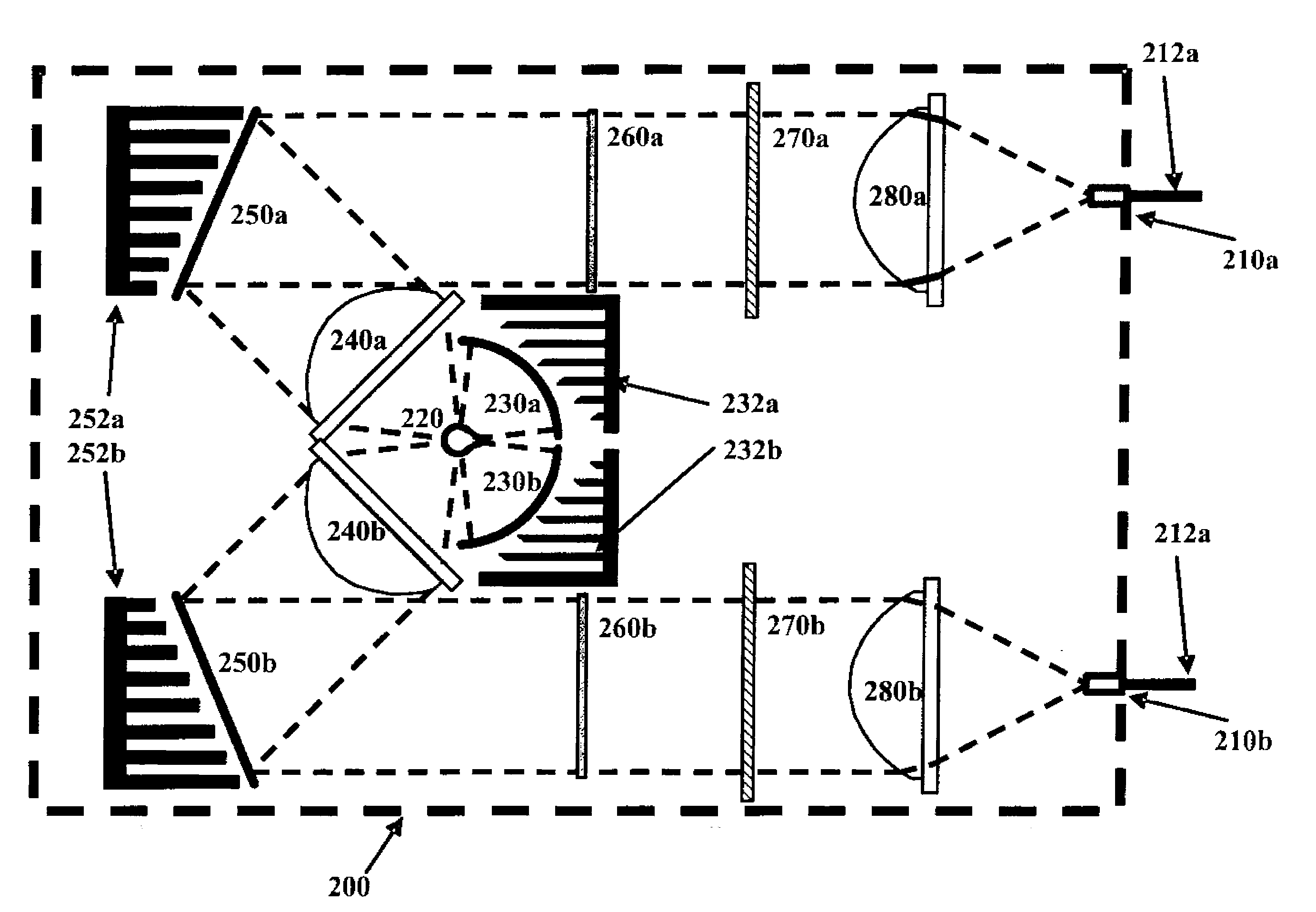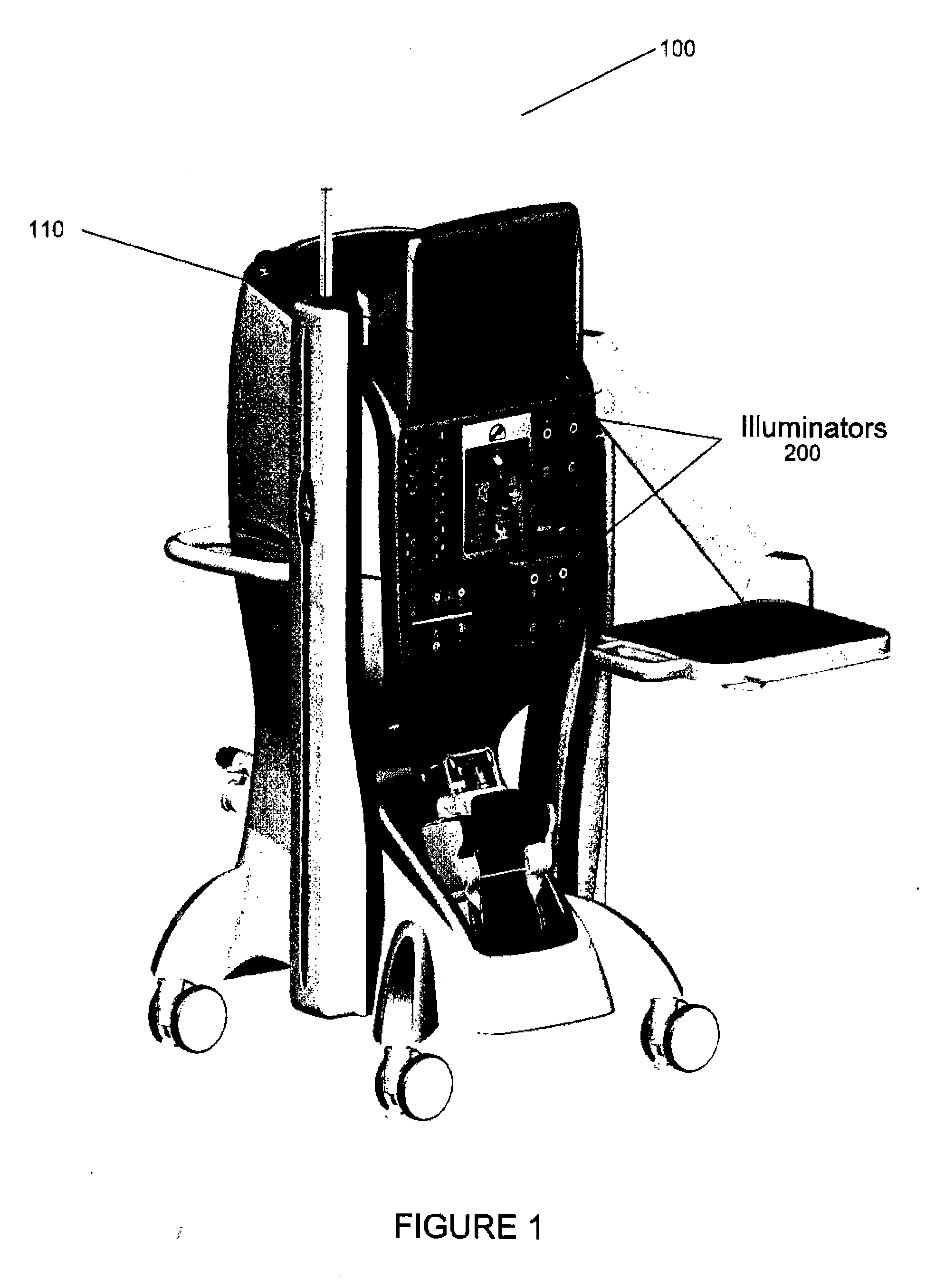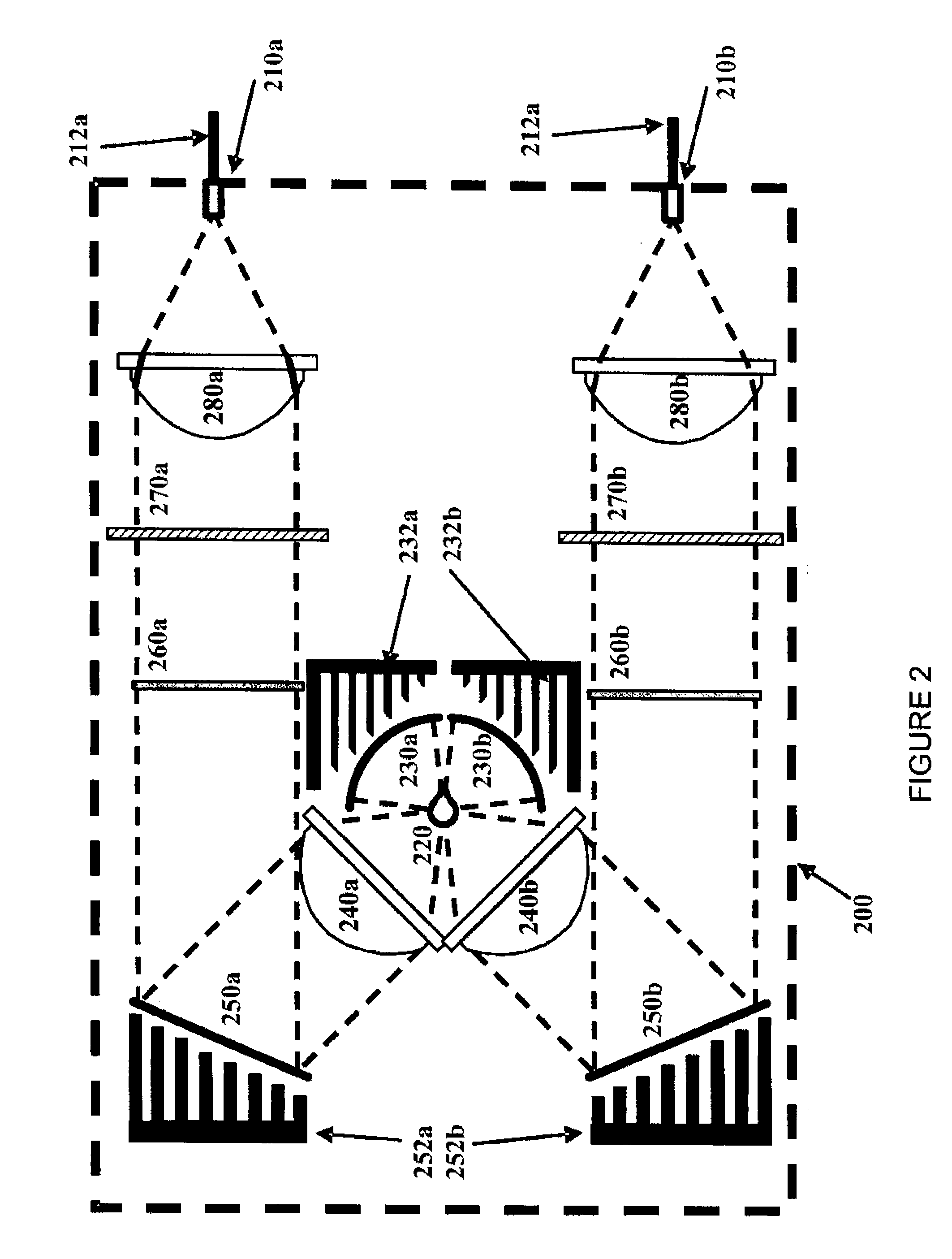System and method for the removal of undesired wavelengths from light
a technology of undesired wavelengths and light source, which is applied in the field of illumination, can solve the problems of light source generating wavelengths of light which are not useful for illumination, mild deterioration to complete loss of vision, and human eye damage, and achieves the effects of reducing undesired wavelengths in light, reducing the cost of operation, and being more durabl
- Summary
- Abstract
- Description
- Claims
- Application Information
AI Technical Summary
Benefits of technology
Problems solved by technology
Method used
Image
Examples
Embodiment Construction
[0015]Preferred embodiments of the invention are illustrated in the FIGURES, like numerals being used to refer to like and corresponding parts of the various drawings.
[0016]Vitreoretinal and Cataract microsurgical consoles can provide an illuminator. These illuminators provide visible light from a light source through, for example, an optic fiber or the like, and may be used to illuminate an area on which a procedure is being performed. The light source for these illuminators may generate wavelengths of light which are not useful for illumination (e.g., those other than visible light), such as ultraviolet (UV) or infrared (IR) light, or which may cause aphakic hazard weighted irradiance, such as certain wavelengths of blue light. These extraneous wavelengths may adversely affect the surgical system, including causing a reduction in the lifetime of certain components, decreased performance due to spherical and chromatic aberrations or other causes, etc. Damage to the optics or their ...
PUM
 Login to View More
Login to View More Abstract
Description
Claims
Application Information
 Login to View More
Login to View More - R&D
- Intellectual Property
- Life Sciences
- Materials
- Tech Scout
- Unparalleled Data Quality
- Higher Quality Content
- 60% Fewer Hallucinations
Browse by: Latest US Patents, China's latest patents, Technical Efficacy Thesaurus, Application Domain, Technology Topic, Popular Technical Reports.
© 2025 PatSnap. All rights reserved.Legal|Privacy policy|Modern Slavery Act Transparency Statement|Sitemap|About US| Contact US: help@patsnap.com



